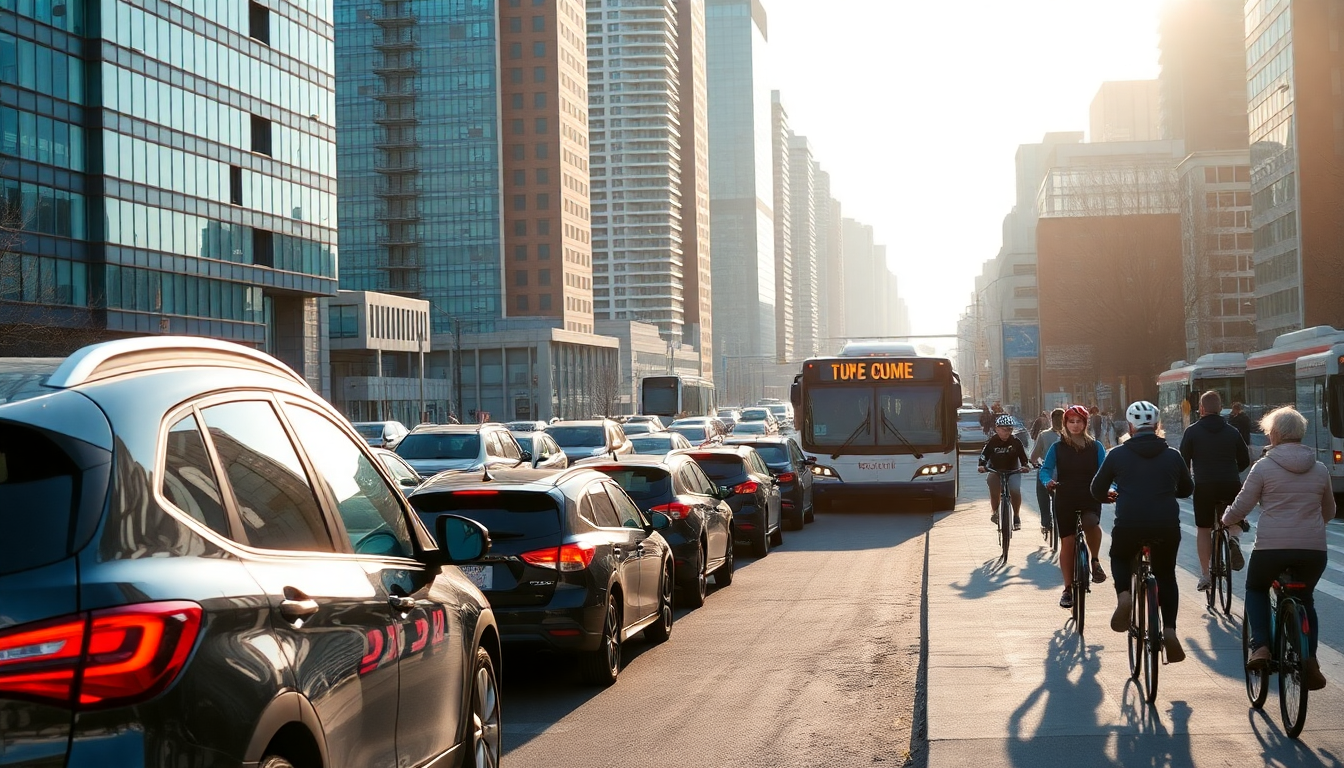Table of Contents
As the Greater Toronto Area prepares for a major shift back to in-office work, the potential impact on commuter traffic is becoming clearer by the day. Imagine this: major employers, including some of Canada’s biggest banks, are now insisting that employees step back into the office more frequently. While this push aims to boost collaboration and operational efficiency, it’s also raising eyebrows about the looming traffic congestion and the strain on public transit in a city already grappling with these issues. How will this play out for daily commuters?
The Current Traffic Landscape in Toronto
Let’s break it down: Toronto’s traffic congestion has hit a critical point, and experts are sounding the alarm. Jennifer Keesmaat, a former chief planner for the city, highlights that the current vehicle traffic situation poses significant concerns for both policymakers and everyday commuters. She points out that transit ridership has taken a nosedive, leading to a sharp increase in the number of cars on the road. With the city’s road infrastructure already stretched thin, even a slight uptick in vehicle numbers could mean longer commute times. Who wants that kind of frustration when trying to get to work?
The city’s infrastructure is particularly challenged because of limited arterial roads and various gridlock-inducing factors, like street parking and seasonal patio spaces. Giles Gherson, president and CEO of the Toronto Region Board of Trade, notes that in the past twenty years, the number of vehicles on Toronto roads has skyrocketed by over a million. As more commuters return to their offices, this influx could make an already challenging traffic situation even worse.
Impact of Return-to-Office Policies
Now, let’s talk about the big players. Companies like BMO, RBC, TD, and Scotiabank are mandating a return to the office for at least four days a week starting this fall. This policy shift is part of a larger trend aimed at fostering collaboration and operational efficiency. Similarly, Rogers Communications Inc. is ramping up its office requirements, asking employees to be in the office four days a week, with plans to shift to five days soon after. And it’s not just the private sector; the Ontario government has jumped on the bandwagon, mandating similar requirements for public servants, raising concerns about the ensuing traffic chaos.
Stuart Green from the Toronto Transit Commission (TTC) reassures us that the agency is gearing up to adapt to the expected increase in commuter demand. Historically, Mondays and Fridays see a dip in ridership, allowing the TTC to manage additional passengers without major disruptions. But can they handle the overall increase in demand as more commuters flock back to downtown Toronto?
Keesmaat warns that if municipalities don’t take proactive steps to encourage public transit use, longer travel times are inevitable. Will city officials step up to the plate and create incentives for commuters to choose transit over driving?
Looking Ahead: The Future of Commuting in Toronto
According to Statistics Canada, there’s been a steady uptick in the number of Canadians commuting to work, hitting 82.6% in May 2025. This trend, combined with the expected return to in-office mandates, suggests that Toronto’s congestion headaches are here to stay. Karen Chapple, director of the School of Cities at the University of Toronto, emphasizes that even with more people returning to the office, the congestion problem won’t just fade away.
As the city tackles these challenges, it finds itself at a pivotal point. Business owners in downtown Toronto are hopeful that the return of office workers will breathe life into local businesses that have been struggling with reduced foot traffic during the pandemic. But here’s the catch: Gherson warns that the city needs to act fast to effectively manage congestion. What happens if the surge in workers overwhelms an already strained transportation infrastructure?
The Toronto Region Board of Trade has put forth a comprehensive action plan to tackle congestion, stressing the importance of better coordination of construction projects and accountability for gridlock at the municipal level. Experts like Keesmaat advocate for improving public confidence in transit systems by enhancing service levels. After all, getting more commuters on public transport is crucial for keeping the city moving. Will these strategies make a difference in your daily commute?


